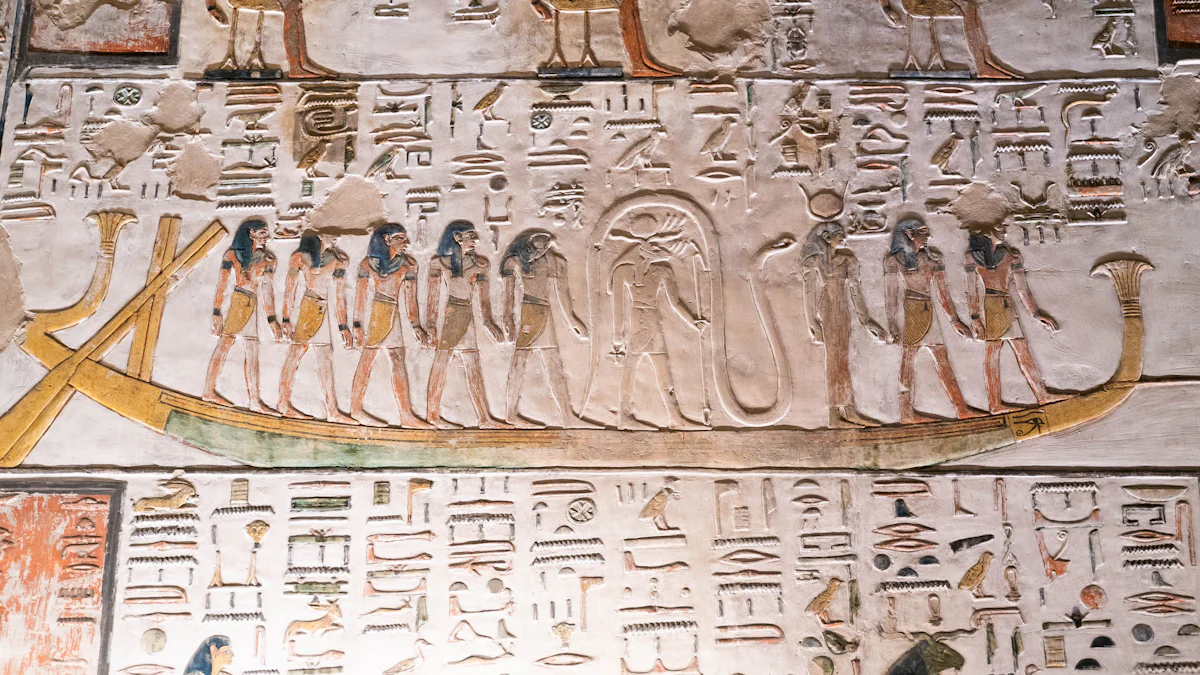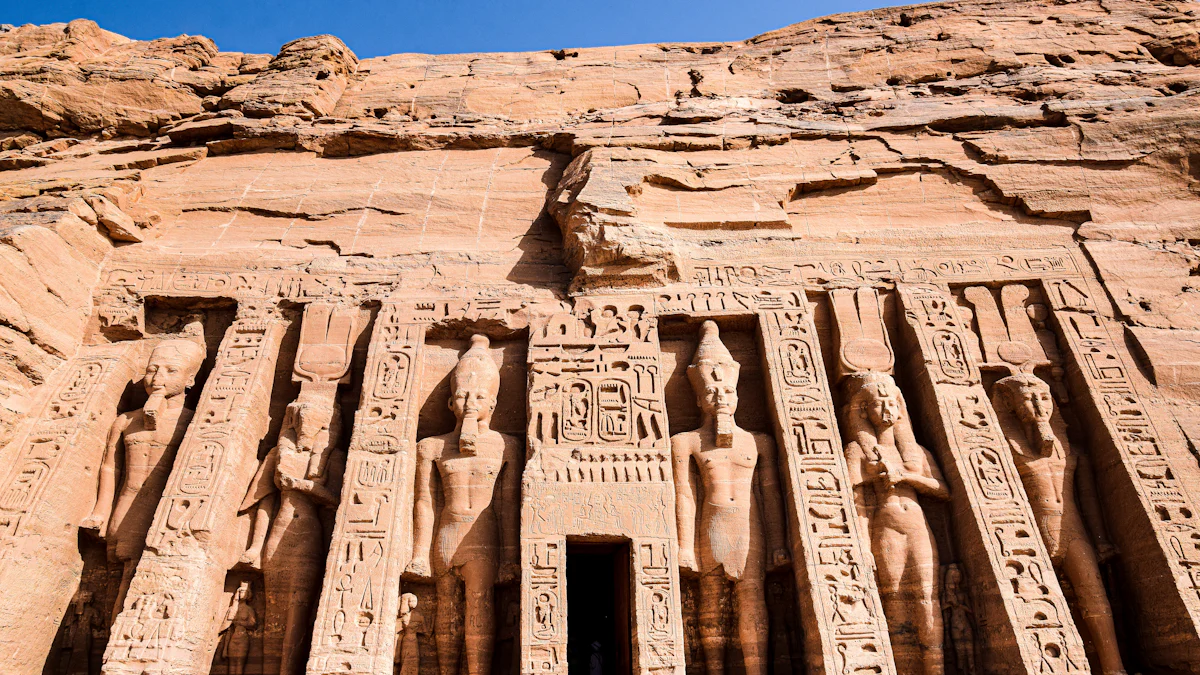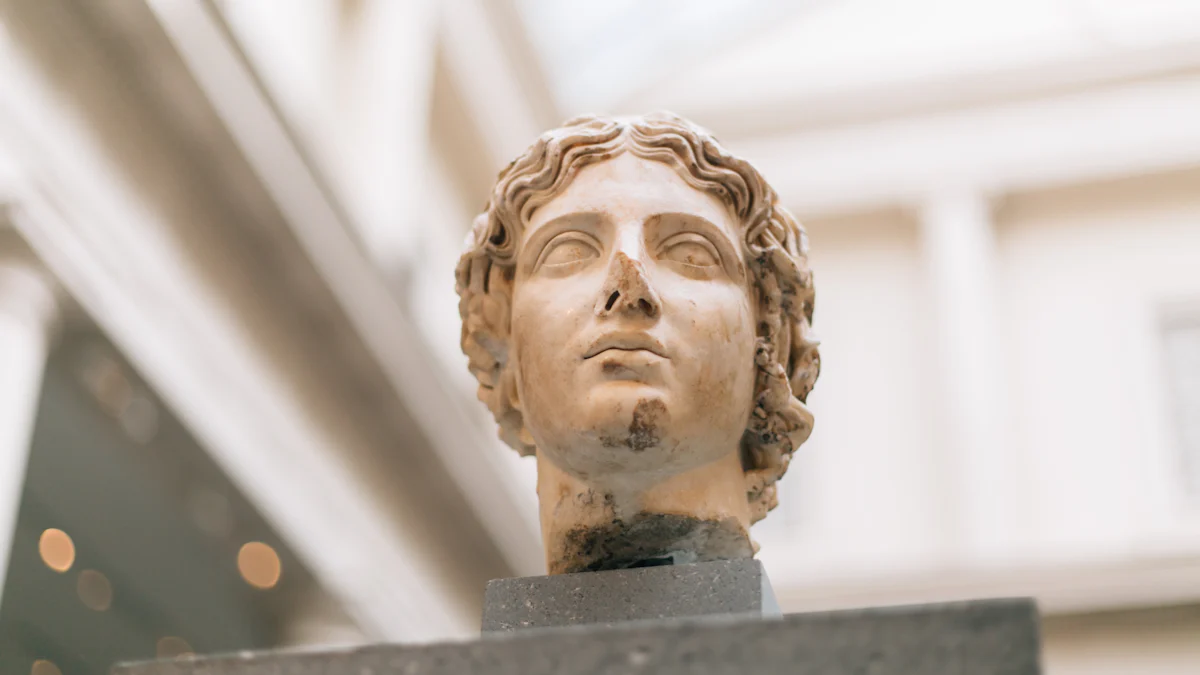Historium: Welcome to the Museum

Explore the wonders of the past in this stunning collection of over 160 historical artefacts, from Ancient Rome to the dynasties of China. Welcome to the museum.
This rich and informative cabinet of curiosities beautifully displays artefacts of the ancient past. Wander from room to room to explore the magnificence of what civilizations have left behind over thousands of years of human history.
With text written by expert Jo Nelson and stunning illustrations by Richard Wilkinson, this updated edition also features a foreword by Sir Tony Robinson.
The Role of Artifacts in Historical Discovery
Understanding Cultural Context

Artifacts as Cultural Symbols
Artifacts serve as tangible evidence of past human activities. These objects reveal chronological data and offer insights into cultural practices. Many artifacts symbolize cultural values and societal hierarchies. For example, ancient pottery often reflects the artistic style and daily life of a civilization. The study titled 'Munifacts: Unveiling Symbolism and Cultural Significance' highlights how these items help in understanding the complexities of human history.
Influence on Modern Culture
Artifacts influence modern culture by connecting past and present. Ancient tools and art inspire contemporary design and technology. Museums display artifacts to educate people about historical influences on today's society. The study 'Cultural Artifacts: Insights into Human Culture and Sociology' emphasizes how artifacts reflect economic, political, religious, or social aspects. This connection enriches cultural appreciation and awareness.
Technological Insights
Tools and Techniques of the Past
Artifacts provide insights into the tools and techniques used by ancient civilizations. Archaeologists study these items to learn about technological advancements. Stone tools, for example, reveal early human innovation and adaptation. The study 'Artifacts in Cultural Contexts: Understanding the Significance' shows how these objects offer interpretive insights into cultural practices.
Evolution of Technology
The evolution of technology becomes evident through artifacts. Early inventions laid the groundwork for modern advancements. Ancient engineering marvels, like aqueducts and pyramids, demonstrate sophisticated techniques. These achievements highlight human ingenuity and progress over time. Artifacts allow historians to trace technological development and its impact on society.
Notable Ancient Artifacts and Their Stories

The Rosetta Stone
Deciphering Ancient Languages
The Rosetta Stone stands as one of the most significant artifacts in history. Discovered by soldiers in Napoleon’s army in 1799, the stone played a crucial role in deciphering Egyptian hieroglyphs. Scholars used the inscriptions on the stone to unlock the secrets of ancient Egyptian civilization. The stone features the same text in three scripts: Greek, Demotic, and hieroglyphic. This allowed linguists to compare and translate the ancient language. The Rosetta Stone provided the key to understanding the rich history of ancient Egypt.
Impact on Modern Linguistics
The impact of the Rosetta Stone extends beyond Egyptology. The stone revolutionized modern linguistics by providing insights into ancient languages. Scholars gained a deeper understanding of the linguistic structures of ancient civilizations. The decipherment of hieroglyphs expanded knowledge of one of the world’s oldest civilizations. This breakthrough forever changed our understanding of ancient history. The Rosetta Stone remains a symbol of linguistic achievement and historical discovery.
The Terracotta Army
Insights into Ancient China
The Terracotta Army offers remarkable insights into ancient China. This collection of sculptures represents the armies of Qin Shi Huang, the first Emperor of China. The army showcases the artistic and engineering prowess of the Qin Dynasty. Each figure in the army displays unique facial features and expressions. This attention to detail reflects the advanced artistic skills of the time. The Terracotta Army provides invaluable insights into the military organization and weaponry of ancient China.
Preservation and Restoration Efforts
Preservation and restoration efforts play a vital role in maintaining the Terracotta Army. Archaeologists work tirelessly to preserve these ancient artifacts. Environmental factors pose challenges to the preservation of the sculptures. Experts use advanced techniques to restore damaged figures. These efforts ensure that future generations can appreciate the history and artistry of the Terracotta Army. The preservation of these artifacts honors the cultural heritage of ancient China.
The Process of Artifact Discovery and Preservation
Archaeological Methods
Archaeologists play a crucial role in uncovering ancient artifacts. These professionals employ various excavation techniques to unearth historical treasures. The Bryn Mawr College Department emphasizes the importance of systematic approaches in archaeological digs. Excavation involves careful removal of soil layers to reveal buried artifacts. This meticulous process ensures that each find retains its historical context.
Dating and analysis follow the excavation phase. Archaeologists use scientific methods to determine the age of artifacts. Radiocarbon dating and dendrochronology help establish timelines for ancient cultures. These techniques provide insights into the history and evolution of human societies. Artifacts offer valuable information about past civilizations, enriching our understanding of history.
Challenges in Preservation
Preservation of artifacts presents significant challenges. Environmental factors pose threats to the integrity of historical items. Humidity, temperature fluctuations, and pollutants can cause deterioration. Conservation efforts aim to protect artifacts from these damaging influences. The Artifact Preservation in Archaeology study highlights the importance of maintaining cultural integrity through conservation.
Ethical considerations also play a role in artifact preservation. Archaeologists must balance the need for research with respect for cultural heritage. The Donald and Mary Chubb collection serves as an example of ethical stewardship. This collection honors the legacy of ancient cultures while providing valuable insights into history. The Creative Commons initiative supports open access to historical documents, promoting education and awareness.
Conservation experts like Brian Howard and John Childs lead efforts to preserve artifacts for future generations. Their work ensures that the stories of ancient civilizations continue to inspire and educate. The National September Memorial and Museum showcases the impact of preservation on cultural heritage. This institution honors the past while providing a platform for historical reflection.
The Instructional Nonfiction History Grades program offers educational resources for students. This initiative encourages young learners to explore the world of archaeology. Essays and assignments help students engage with historical artifacts and their significance. The Latest HAI Insights provide valuable information for educators and students alike.
Artifacts as Gateways to Tangible History

Artifacts and Their Connection to Human History
How Artifacts Reflect Human Evolution
Artifacts are tangible incarnations of human history. These objects provide a window into the evolution of human societies. Stone tools, pottery, and ancient weapons capture moments from different eras. These items reveal how humans adapted to their environments. Artifacts reflect technological advancements and cultural shifts. Archaeological discoveries offer insights into human evolution. The study titled 'Archaeological Discoveries: Unveiling Munifacts through Time' highlights the significance of munifacts in understanding the past.
Artifacts connect people to their ancestors. These objects serve as reminders of shared heritage. Artifacts pique the viewer's curiosity about ancient civilizations. Museums display artifacts to educate the public. Artifacts as gateways to tangible history make abstract concepts more relatable. Artifacts capture moments that define human progress. Artifacts connect people across time and space.
The Number and Variety of Artifacts Made by Humans
Humans have created countless artifacts throughout history. These objects range from simple tools to intricate sculptures. The variety of artifacts reflects diverse cultures and traditions. Artifacts capture the essence of different societies. Each artifact tells a unique story about its creators. The study 'Artifact Preservation Methods' emphasizes the importance of preserving these items. Preservation efforts ensure that future generations can learn from these historical treasures.
Artifacts add depth to our understanding of history. These objects provide evidence of human creativity and innovation. Artifacts reflect the values and beliefs of past societies. The preservation of artifacts allows historians to piece together human history. Artifacts are tangible incarnations of the past. Artifacts capture moments that shaped the world.
Active History Through Artifacts
How Artifacts Make History Relatable
Artifacts make history relatable by providing concrete examples of past events. These objects allow individuals to connect with historical narratives. Artifacts capture the essence of ancient cultures. Museums use artifacts to engage visitors in interactive exhibits. Artifacts as gateways to tangible history bring stories to life. Artifacts capture moments that resonate with modern audiences. Artifacts connect people to their cultural roots.
Artifacts add context to historical events. These objects offer insights into daily life and societal norms. Artifacts reflect the challenges and triumphs of past civilizations. The study 'Artifacts Preservation and Insights' highlights the evidential value of artifacts. Artifacts capture moments that define human experience. Artifacts connect people to their shared heritage.
The Role of Artifacts in Active Historical Engagement
Artifacts play a crucial role in active historical engagement. These objects encourage individuals to explore the past. Artifacts capture the imagination and inspire curiosity. Educational programs use artifacts to teach students about history. Artifacts as gateways to tangible history foster a deeper understanding of cultural heritage. Artifacts capture moments that spark interest in historical research.
Artifacts and active voices contribute to historical discourse. These objects provide a platform for diverse perspectives. Artifacts capture the complexities of human history. The study 'Archaeological Discoveries: Unveiling Munifacts through Time' underscores the importance of munifacts in historical interpretation. Artifacts capture moments that elevate stories from the past. Artifacts connect people to their historical allies.
Artifacts illuminate the rich tapestry of history. These tangible pieces connect us to ancient civilizations and their stories. Visiting local museums and historical sites, like the Cambridge American Cemetery, offers a unique opportunity to engage with these relics. The American Battle Monuments Commission preserves such sites, allowing Americans to interact with history firsthand. Each artifact, from the simplest tool to intricate art, tells a part of our shared American past. The journey of discovery continues, inviting exploration and reflection on how these treasures shape our understanding of history.
See Also
Historical Events Unveiled in a New Light
Ancient Egyptian Riches Revealed
Civilization's Beginnings to Modern Times

